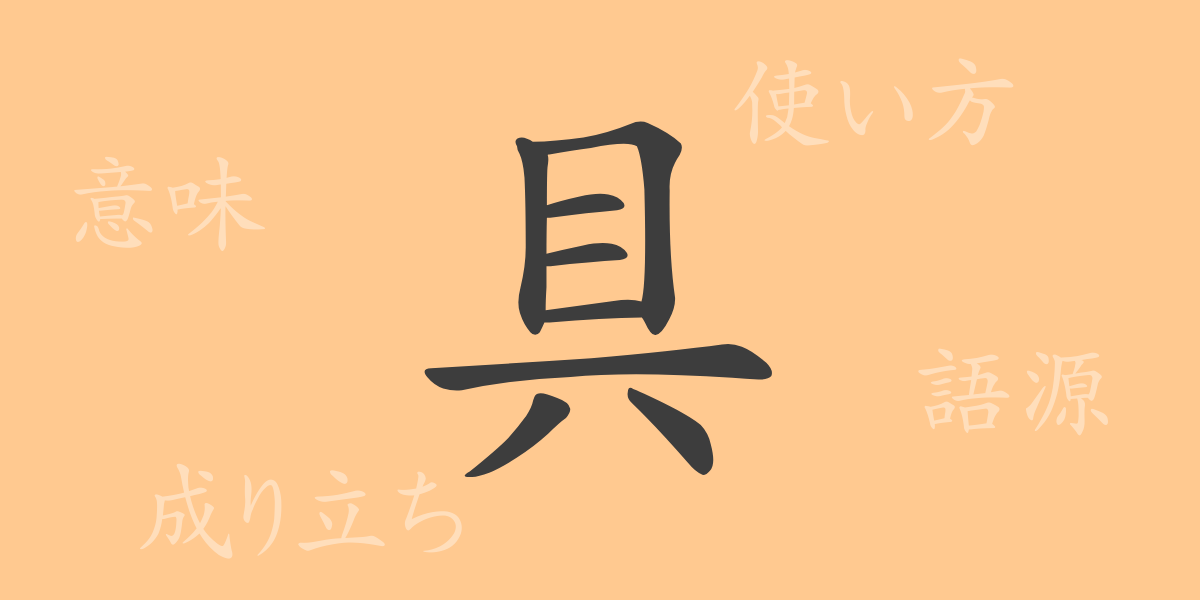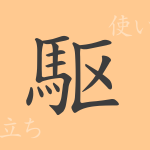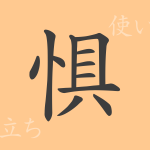Kanji, with their rich shapes and meanings, deeply enhance Japanese expression. The commonly used kanji “具(ぐ)” is no exception. Although it appears simple at first glance, this character holds diverse meanings and usages, playing a crucial role in the Japanese language. In this article, we will dive deep into the world of “具(ぐ),” exploring its origins and modern usage.
Origin of 具(ぐ) (Etymology)
The kanji “具(ぐ)” originated in ancient China. Tracing its etymology, it originally meant “to prepare.” The shape of “具(ぐ)” includes elements such as “文房具(ぶんぼうぐ)” (stationery) and “食事の際の具(しょくじのさいのぐ)” (ingredients in a meal), encompassing the idea of having everything ready. Over time, its form and meaning have evolved slightly, but it still retains its basic sense while being used in various contexts in modern Japanese.
Meaning and Usage of 具(ぐ)
The kanji “具(ぐ)” means “to prepare” or “to be complete,” indicating a state where everything is fully equipped. It also refers to specific items like “道具(どうぐ)” (tools) or “食材(しょくざい)” (ingredients). Additionally, it is used to denote abstract concepts or states, such as in “具体的(ぐたいてき)” to express something that is clear and detailed.
Readings, Stroke Count, and Radical of 具(ぐ)
Here are some basic details about the kanji “具(ぐ)”:
- Readings: On’yomi (Chinese reading) – ぐ; Kun’yomi (Japanese reading) – そな.える, つぶさ.に
- Stroke count: 8 strokes
- Radical: The radical is 八(はちがしら)
Idioms, Phrases, and Proverbs Using 具(ぐ)
There are many idioms, phrases, and proverbs that include the kanji “具(ぐ).” Here are a few examples:
- 具体的(ぐたいてき) – Describes something that is specific and detailed, not abstract.
- 道具立て(どうぐだて) – A set of tools necessary for performing a task.
- 金具(かなぐ) – A general term for metal fittings or parts.
- 具現化(ぐげんか) – The act of making something abstract into a concrete form.
- 具になる(ぐになる) – An idiom meaning to become tangible or actual, making a discussion more concrete.
Conclusion on 具(ぐ)
The kanji “具(ぐ)” can hold a variety of meanings depending on its usage. While it is a basic kanji frequently used in daily life, it has a rich history and meaning behind it. Through this article, we hope to deepen your understanding of “具(ぐ)” and help you achieve richer Japanese expression.

























